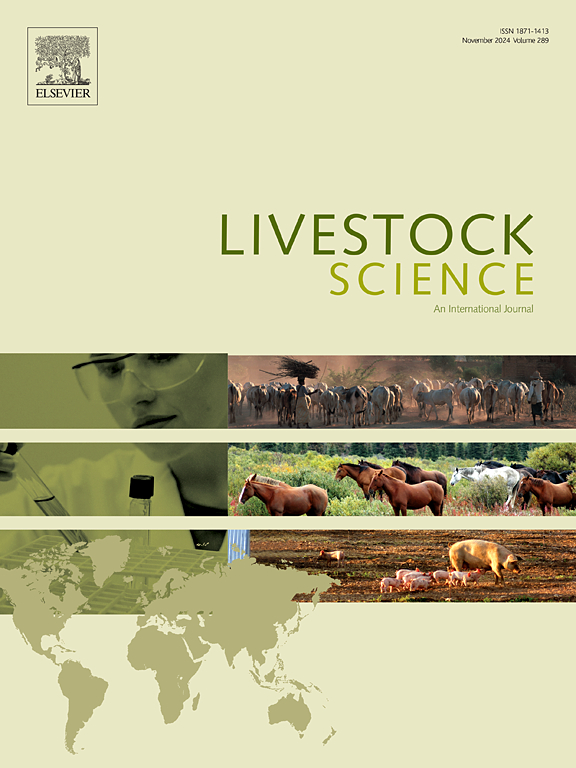Unlocking potential, facing challenges: A review evaluating virtual fencing for sustainable cattle management
IF 1.9
3区 农林科学
Q2 AGRICULTURE, DAIRY & ANIMAL SCIENCE
引用次数: 0
Abstract
Virtual fencing systems are an innovative technology that uses GPS and wireless signals to create an invisible barrier around a designated area. It simplifies the work of the farmer, allows for easy paddock rotation, and enables real-time monitoring of the herd and animal behavior. However, more research and development is needed to fully realize the benefits of this technology. This review aimed to identify, critically appraise, and map the existing literature on the effectiveness and reliability of virtual fencing and its multifaceted impact on the welfare of cattle, considering both the positive effects and potential challenges associated with this technology.
Studies have shown that virtual fencing is highly effective and reliable for cattle. Although there have been cases of cattle crossing the virtual boundary, the vast majority of the time, the animals stayed within the designated area. It is important to provide a learning period where the animals learn to respond to the acoustic signal and respect the virtual boundary. Studies have not found any negative impact on welfare when using virtual fencing compared to conventional fences. However, future studies should focus on improving the accuracy of the system, developing alternative aversive stimuli, optimizing training protocols, investigating interindividual differences among animals, social learning and the long term effect of virtual fencing on the welfare of animals.
释放潜力,面对挑战:评估可持续养牛管理虚拟围栏的综述
虚拟围栏系统是一项创新技术,它利用GPS和无线信号在指定区域周围创建一个看不见的屏障。它简化了农民的工作,允许轻松的围场轮换,并能够实时监控畜群和动物行为。然而,要充分认识到这项技术的好处,还需要更多的研究和开发。本综述旨在识别、批判性评估和绘制关于虚拟围栏的有效性和可靠性及其对牛福利的多方面影响的现有文献,同时考虑到与该技术相关的积极影响和潜在挑战。研究表明,虚拟围栏对牛来说非常有效和可靠。虽然有牛越过虚拟边界的案例,但绝大多数情况下,动物都呆在指定的区域内。重要的是提供一段学习时间,让动物学会对声音信号做出反应并尊重虚拟边界。与传统围栏相比,研究没有发现使用虚拟围栏对福利有任何负面影响。然而,未来的研究应集中在提高系统的准确性,开发替代性厌恶刺激,优化训练方案,调查动物之间的个体差异,社会学习以及虚拟围栏对动物福利的长期影响。
本文章由计算机程序翻译,如有差异,请以英文原文为准。
求助全文
约1分钟内获得全文
求助全文
来源期刊

Livestock Science
农林科学-奶制品与动物科学
CiteScore
4.30
自引率
5.60%
发文量
237
审稿时长
3 months
期刊介绍:
Livestock Science promotes the sound development of the livestock sector by publishing original, peer-reviewed research and review articles covering all aspects of this broad field. The journal welcomes submissions on the avant-garde areas of animal genetics, breeding, growth, reproduction, nutrition, physiology, and behaviour in addition to genetic resources, welfare, ethics, health, management and production systems. The high-quality content of this journal reflects the truly international nature of this broad area of research.
 求助内容:
求助内容: 应助结果提醒方式:
应助结果提醒方式:


